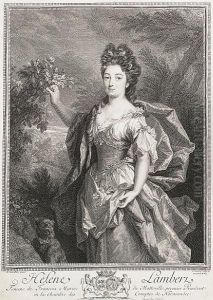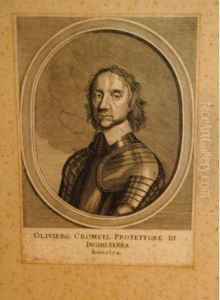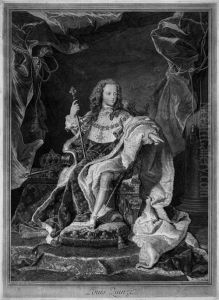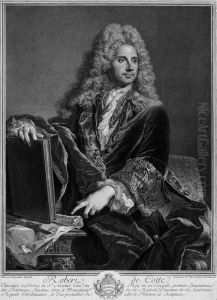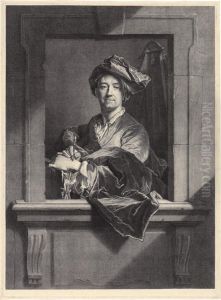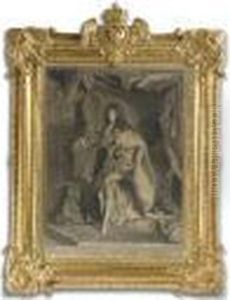Pierre Drevet Paintings
Pierre Drevet, born in 1663 in Loire-sur-Rhône, France, emerged as one of the most celebrated engravers of the 17th and early 18th centuries. His mastery in the art of engraving, particularly in the domain of portrait engraving, positioned him as a pivotal figure in the French art scene of his time. Drevet initially apprenticed under his father, Pierre Drevet the Elder, who was also an engraver, though not as widely recognized as his son would become. This foundational period was crucial for Drevet, as it equipped him with the technical skills and artistic sensitivities that would define his career.
Drevet's talent was soon recognized beyond his local environment, leading him to Paris, where he would eventually become a protege of the renowned portrait painter Hyacinthe Rigaud. This relationship was instrumental for Drevet; Rigaud's influence is evident in many of Drevet's engravings, which often replicated the opulence and precision of Rigaud's portraits. Drevet's work was marked by an exceptional ability to capture not just the physical likeness but the psychological depth of his subjects, a quality that made his engravings highly sought after by the aristocracy and royalty across Europe.
Throughout his career, Drevet was commissioned to create engravings of several prominent figures of his time, including Louis XIV, Pope Clement XI, and Louis XV as a child, among others. His engravings were celebrated for their intricate detail, the richness of expression, and the technical finesse, qualities that allowed him to elevate the medium of engraving to new heights. Drevet's contributions to the art of engraving were recognized by his admission to the Royal Academy of Painting and Sculpture in 1707, an honor that underscored his significance in the French art world.
Pierre Drevet's legacy extends beyond his death in 1738; he left behind a body of work that continues to be admired for its artistic excellence and technical mastery. His influence persisted through his descendants, with his son Pierre-Imbert Drevet also gaining recognition as an accomplished engraver. Together, the Drevets contributed to the elevation of portrait engraving as a respected and valued art form during the 17th and 18th centuries, securing their place in the annals of art history. Drevet's engravings remain a testament to the beauty and complexity of the medium, cherished by collectors and art aficionados around the world.

